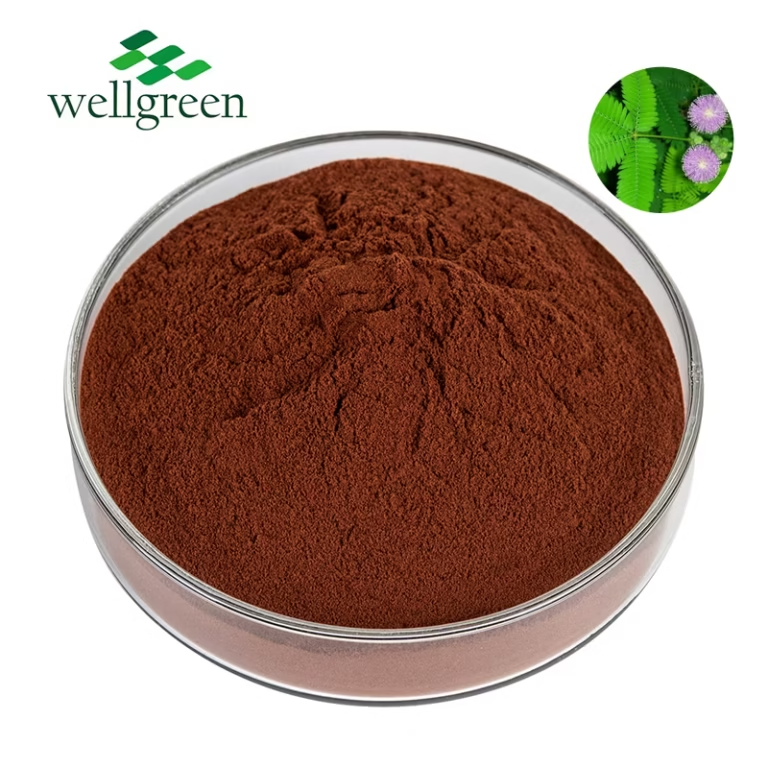
Mimosa hostilis is a venerable plant deeply ingrained in the traditions of various Indigenous cultures across South America. For centuries, it has been utilized by indigenous communities for its multifaceted spiritual and medicinal applications. The root bark, known as kahie, is particularly revered for its hallucinogenic effects, believed to induce profound visions that facilitate growth.
Through rituals, the plant spirit of Mimosa hostilis is invoked, guiding individuals on a path of self-discovery and reconciliation with their inner selves. The knowledge concerning this sacred plant has been transmitted through generations, preserving the rich cultural heritage and wisdom of these communities.
Delving into MHRB Extract: The Mysteries of Mimosa Hostilis
Mimosa hostilis, a tropical plant indigenous to the Americas, has captured the attention of both researchers for centuries. This remarkable species harbors within its roots a potent substance known as MHRB, which has gained significant attention in recent times.
MHRB extract is celebrated for its effects, often associated with introspective journeys. Traditional knowledge suggest a long history of MHRB use in healing ceremonies.
- Scientists continue to explore the active compounds of MHRB, seeking to illuminate its full depth of effects.
- The nuances surrounding MHRB usage require awareness. It is vital to engage the expertise of knowledgeable individuals before engaging in any practices involving this powerful extract.
Exploring the Ethnobotanical Uses of Mimosa tenuiflora
Mimosa tenuiflorae, commonly acknowledged as "mimosa", holds a significant position within the ethnobotany literature of diverse communities. Its wide-ranging properties have been explored for centuries in traditional medicinal practices, as well as in rituals. The roots of this remarkable plant possess a rich spectrum of bioactive constituents believed to exhibit therapeutic effects.
From curing ailments like pain to enhancing spiritual awareness, Mimosa tenuiflora has long been revered for its profound impact on human life.
The Chemistry and Pharmacology of Mimosa Hostilis Root Bark
Mimosa hostilis root bark boasts a complex chemical profile, primarily known for its high concentrations of alkaloids. Among these, dimethyltryptamine (copyright) and tetrahydroharmine are particularly noteworthy. These compounds possess a range of pharmacological activities, including mind-altering effects. The bark furthermore other alkaloids, including harmine, which may contribute to its overall pharmacological profile.
The traditional applications of Mimosa hostilis root bark include a spectrum of therapeutic purposes, particularly in native cultures. However, it is crucial to recognize that scientific research on the effectiveness of these uses remains scarce.
Harnessing the Power of copyright with Mimosa Hostilis
Mimosa hostilis, a plant native to South America, has captured the attention of researchers and individuals alike for its potent chemicals, particularly dimethyltryptamine, or copyright. copyright is a powerful hallucinogenic substance known for producing intense altered states of consciousness. By utilizing the bark of Mimosa hostilis, one can journey into the realms of copyright-induced experiences. It is important to remember that copyright is a strong substance and should be treated with reverence.
- Ethical use is paramount, and researching from experienced individuals or knowledgeable sources is highly recommended.
- The pathway of copyright can be both insightful but also potentially intense. It is essential to prepare both mentally and physically for the outcomes that may arise.
copyright from Mimosa hostilis offers a unique opportunity to explore the depths of consciousness, potentially leading to personal growth and insight.
Challenges in Using Mimosa Hostilis
The utilization of Mimosa hostilis for traditional purposes raises a myriad of philosophical questions. While some argue that its cultural significance warrants respect and tolerance, others warn its use due to potential harmful consequences. It's crucial to evaluate this complex issue with thoughtfulness, taking into account the religious contexts and potential side effects. A balanced perspective is essential for navigating the ethical landscape surrounding Mimosa hostilis.
Raising Mimosa Hostilis: A Guide for Growers
Embarking on the journey of cultivating Mimosa Hostilis can be a gratifying experience for the dedicated grower. This enchanting plant, native to tropical regions of the Americas, has gained significant notoriety in recent years due to its distinctive properties. Prior to your cultivation mission, it is crucial to grasp the specific requirements this plant demands to thrive.
- Guaranteeing adequate sunlight is paramount for healthy Mimosa Hostilis growth. These plants thrive in unfiltered sunlight, ideally receiving a minimum of ten hours per day.
- Preserving well-drained soil is essential to prevent root rot, a common ailment that can destroy your plants. A mixture of loamy soil with composted matter is ideal.
- Consistent watering is necessary, but be mindful not to overwater your Mimosa Hostilis. Allow the top inch of soil to harden before providing another irrigation.
The Shamanic Traditions Surrounding Mimosa Hostilis
Deep within the timeless forests of South America, the rituals of transformation have been practiced for generations. Among these powerful allies is Mimosa Hostilis, a sacred plant revered by the shamanic traditions of indigenouscommunities. It holds within its bark a wealth of power, guiding healers on their journeys into the otherworld.
The medicine men understand that Mimosa Hostilis is not simply a herb; it is a portal between worlds, connecting us to the ancient energies that weave all of creation.
Confronting Legal Issues with Mimosa Hostilis
The legal status of mimosa hostilis differs significantly from one jurisdiction to another. That means that the permissibility of possessing, using, or cultivating this plant depends on your particular geographic location.
Furthermore, laws and regulations surrounding mimosa hostilis are constantly changing. It is therefore crucial that you carefully research the applicable legal framework in your region.
- Consulting a legal professional who specializes in hemp laws is highly advised.
- Staying informed about any changes to the law can help you stay clear of any potential legal issues.
Mimosa Hostilis and Spiritual Exploration: A Journey Inward seeking
The ancient wisdom whispered through the rustling leaves of Mimosa Hostilis calls to seekers on a mystical quest. Embarking upon this path is to unleash hidden dimensions within, where the veil between worlds thinns. It's a transformative experience that enlightens the soul, revealing truths dormant beneath the surface. As you blend with the essence of this sacred plant, be prepared for visions that challenge your perception.
- Accept the unknown with an open heart and a curious mind.
- Release all expectations and allow yourself to be guided by the flow.
- Remember, this is a path of self-discovery. Have faith in your own wisdom.
The wisdom gained through Mimosa Hostilis echoes long after the experience has faded. It is a gift that can transform your life in profound and eternal ways.
Understanding the Challenges and Benefits of Mimosa Hostilis
Mimosa more info hostilis is a plant native to South America, gaining increasing attention for its potential pharmacological properties. While it contains valuable compounds like copyright, responsible for its psychoactive effects, it's crucial to approach this plant with caution. Understanding both the risks and the benefits of Mimosa hostilis is essential for safe and informed use. Potential side effects can include psychological distress, emphasizing the need for thorough research, responsible consumption, and a secure environment.
- It's important to consult with a healthcare professional before using Mimosa hostilis or any products derived from it.
- Proper dosage is crucial to minimize potential negative consequences.
- Be aware of the regulations surrounding Mimosa hostilis in your locality.
- Always prioritize safety and well-being when exploring the use of this plant.
